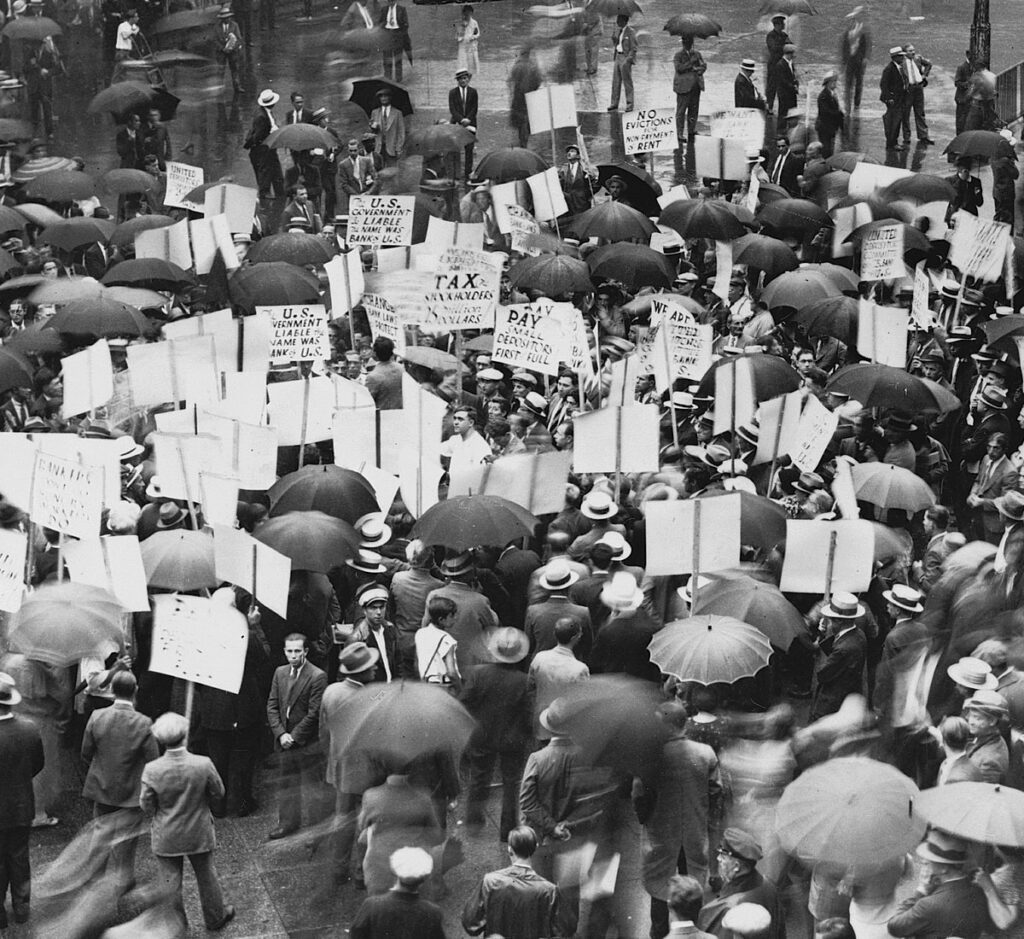
In the midst of the Great Depression’s unrelenting grip on the nation, a photograph titled “Men Waiting in a Line for the Possibility of a Job” captures a moment frozen in time. A stark portrayal of despair, the image invites us to delve beyond the surface, to uncover the threads of hope woven into the fabric of adversity.
The photograph, like a sepia-toned portal, transports us to a bygone era where economic turmoil had cast its heavy shadow on countless lives. Faces etched with weariness and uncertainty form a line that snakes through the dust-choked air, a congregation of men tethered to a collective longing for opportunity.
Yet, amid the grim circumstances, a closer inspection reveals the indomitable human spirit manifesting itself in acts of kindness and solidarity among the men. The line, initially a symbol of shared desperation, becomes a conduit for compassion and mutual support.
As the photographer’s lens captures the raw emotion of the scene, we witness a man on the fringes of the line extending a tin cup filled with water to his neighbor. The simple act of sharing this precious resource in the sweltering heat is a testament to the resilience and camaraderie forged in the crucible of hardship. It is a reminder that, even in the face of adversity, the human instinct to lend a helping hand endures.

In our quest to unearth the stories of hope embedded in this photograph, we turn to the annals of history and engage with local historians and descendants of those who weathered the storm of the Great Depression. Their narratives paint a vivid picture of how communities coped and supported each other during this tumultuous time.
One descendant, Mary Turner, recounts her grandfather’s tales of that era. His memories echo through time, detailing how a sense of shared struggle led to the formation of impromptu support networks. Community kitchens emerged, where individuals pooled meager resources to ensure that no one went hungry. A pot of soup simmered over an open fire, serving as both sustenance and a symbol of unity.
Local historian Dr. Benjamin Hayes elaborates on the resilience of communities during the Great Depression, emphasizing the emergence of self-sustaining microcosms within larger cities. “People became resourceful out of necessity,” he notes, describing how neighborhoods organized barter systems, exchanging goods and services to meet basic needs.

Back in the photograph, a man towards the center of the line leans on a makeshift crutch, his worn-out shoes revealing the harshness of the journey he has endured. Beside him, another man shares a morsel of bread, a fragment of sustenance that transcends its physical form. It becomes a symbol of shared humanity and a flicker of hope that even in the direst circumstances, kindness endures.
As we reflect on this poignant moment in history, the photograph ceases to be a mere relic frozen in time. Instead, it becomes a conduit for understanding the resilience of the human spirit, a beacon of hope amidst the despair of the Great Depression. It reminds us that, even in the face of seemingly insurmountable challenges, acts of kindness and solidarity can illuminate the darkest corners, forging connections that endure long after the echoes of hardship have faded away.